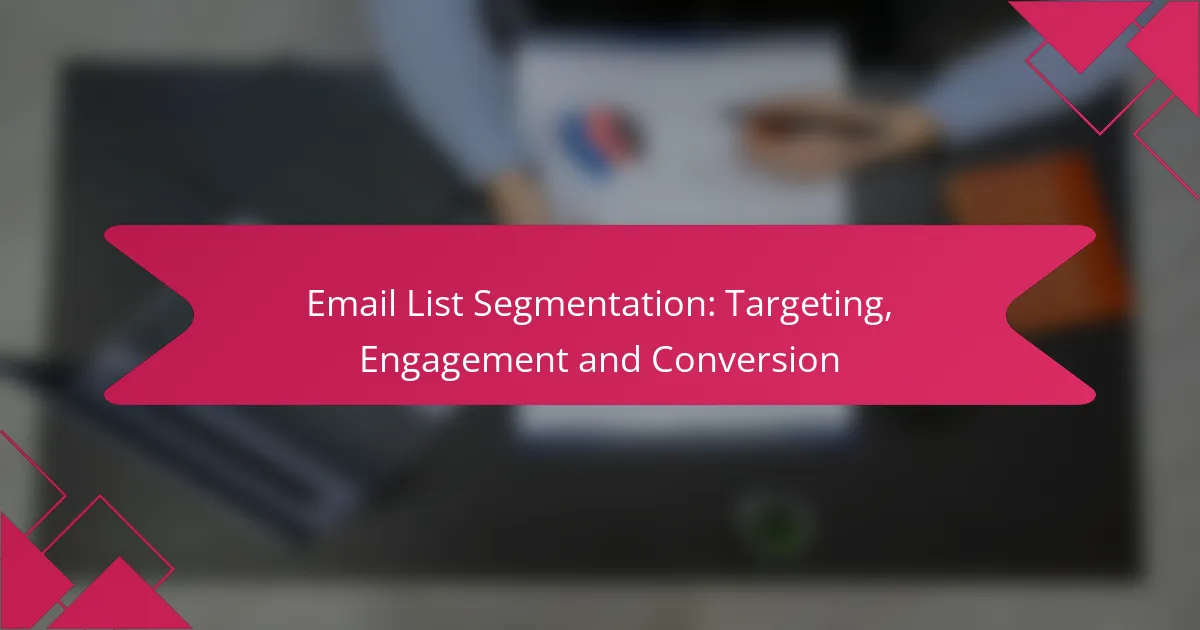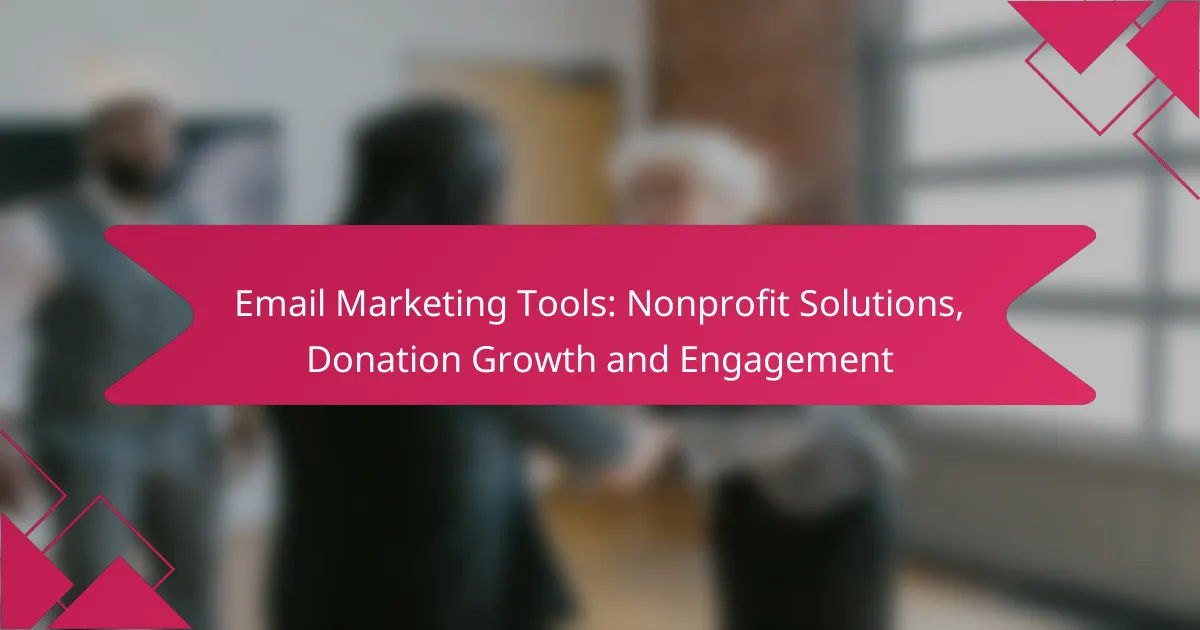Email personalization is a powerful strategy that enhances engagement by tailoring content to individual preferences and behaviors. By leveraging data and understanding customer needs, businesses can create relevant communications that resonate with their audience, ultimately driving higher conversion rates. Key factors such as data quality and effective technology play a crucial role in the success of these personalized email campaigns.

What are effective email personalization strategies in Canada?
Effective email personalization strategies in Canada focus on tailoring content to individual preferences and behaviors, enhancing engagement and conversion rates. By utilizing various techniques, businesses can create more relevant and impactful email communications that resonate with their audience.
Dynamic content personalization
Dynamic content personalization involves changing email content based on the recipient’s preferences or behaviors. For example, an online retailer might display different product recommendations depending on past purchases or browsing history. This strategy increases relevance, making emails more appealing to recipients.
To implement dynamic content, use email marketing platforms that support this feature. Ensure that the data used for personalization is accurate and up-to-date to avoid misrepresentations that could frustrate customers.
Behavior-based targeting
Behavior-based targeting focuses on sending emails triggered by specific actions taken by users, such as opening previous emails or abandoning shopping carts. This approach allows businesses to respond promptly to customer interests, increasing the likelihood of conversions.
For instance, if a customer leaves items in their cart, sending a follow-up email with a reminder or a discount can encourage them to complete the purchase. Tracking user behavior effectively is crucial for this strategy to succeed.
Segmentation by demographics
Segmentation by demographics involves categorizing your email list based on characteristics like age, gender, location, or income level. This allows businesses to tailor messages that resonate with specific groups, enhancing engagement rates.
For example, a company might send different promotions to younger audiences compared to older ones, reflecting their distinct preferences. Regularly updating demographic data ensures that segmentation remains effective and relevant.
Utilizing customer data
Utilizing customer data means leveraging information collected from interactions, purchases, and feedback to inform email strategies. This data can help identify trends and preferences, allowing for more targeted messaging.
For instance, analyzing past purchase data can reveal which products are popular among specific customer segments, guiding future email campaigns. Always ensure compliance with privacy regulations, such as Canada’s Anti-Spam Legislation (CASL), when collecting and using customer data.
Personalized subject lines
Personalized subject lines can significantly increase open rates by making emails feel more relevant to the recipient. Including the recipient’s name or referencing their interests in the subject line can capture attention effectively.
A/B testing different subject lines can help determine which formats resonate best with your audience. Keep subject lines concise and engaging to encourage recipients to open the email and explore the content inside.

How does email personalization impact engagement?
Email personalization significantly enhances engagement by tailoring content to individual preferences and behaviors. This approach leads to more relevant communication, which can increase the likelihood of recipients interacting with the email.
Increased open rates
Personalized emails typically achieve higher open rates compared to generic messages. When recipients see their name or relevant content in the subject line, they are more inclined to open the email. Studies suggest that personalized subject lines can improve open rates by a notable percentage.
To maximize open rates, consider segmenting your audience based on demographics or past interactions. This allows you to craft subject lines that resonate more with specific groups, increasing the chances of engagement.
Higher click-through rates
Email personalization can lead to higher click-through rates (CTR) by providing content that aligns with the recipient’s interests. When emails include tailored recommendations or offers, users are more likely to click on links or call-to-action buttons.
To enhance CTR, utilize dynamic content that changes based on user behavior or preferences. For example, if a customer frequently purchases fitness products, showcasing related items or exclusive discounts can drive clicks effectively.
Improved customer retention
Personalized emails contribute to improved customer retention by fostering a sense of connection and loyalty. When customers receive tailored communications, they feel valued and understood, which encourages them to remain engaged with the brand.
To strengthen retention, implement a strategy that includes personalized follow-ups after purchases or tailored content based on user activity. Regularly engaging customers with relevant information can help maintain their interest and loyalty over time.

What factors contribute to successful email personalization?
Successful email personalization relies on several key factors, including data quality, understanding customer preferences, and effective technology use. These elements work together to create tailored experiences that resonate with recipients and drive engagement.
Data quality and accuracy
High-quality data is essential for effective email personalization. Accurate and up-to-date information about customers, such as their names, purchase history, and engagement metrics, allows businesses to craft relevant messages. Regularly cleaning and verifying data can help maintain its integrity.
Consider implementing automated tools to monitor data accuracy, ensuring that your email lists are free from duplicates and errors. This practice can significantly enhance the effectiveness of your campaigns.
Understanding customer preferences
To personalize emails effectively, businesses must understand their customers’ preferences and behaviors. This can be achieved through surveys, feedback forms, and analyzing past interactions. Knowing what content resonates with your audience enables you to tailor messages that meet their needs.
Segmenting your audience based on their preferences allows for more targeted campaigns. For example, a clothing retailer might send different promotions to customers interested in casual wear versus formal attire, increasing the likelihood of engagement.
Effective use of technology
Leveraging technology is crucial for successful email personalization. Email marketing platforms often offer features like dynamic content, which allows you to change parts of your email based on the recipient’s profile. This capability can significantly enhance the relevance of your messages.
Additionally, consider using analytics tools to track the performance of personalized emails. Monitoring open rates, click-through rates, and conversions can provide insights into what strategies are working and where adjustments are needed. Regularly optimizing your approach based on these insights can lead to improved results over time.

What tools enhance email personalization?
Several tools significantly enhance email personalization by allowing marketers to tailor content based on user behavior, preferences, and demographics. These platforms provide features such as segmentation, dynamic content, and automation to create more relevant and engaging email campaigns.
Mailchimp
Mailchimp offers robust email personalization features, including audience segmentation and customizable templates. Users can create targeted campaigns based on subscriber data, such as location, purchase history, and engagement levels, ensuring that content resonates with each recipient.
To maximize effectiveness, consider using Mailchimp’s A/B testing capabilities to determine which personalized messages yield the best results. This iterative approach can help refine your strategy over time.
HubSpot
HubSpot excels in integrating email personalization with its comprehensive CRM system. This allows marketers to access detailed customer profiles and tailor emails accordingly, enhancing relevance and engagement. HubSpot’s smart content feature enables dynamic content changes based on user attributes.
Utilizing HubSpot’s automation workflows can streamline the personalization process, ensuring timely and contextually relevant communications. Always keep data privacy regulations in mind when collecting and using personal information.
ActiveCampaign
ActiveCampaign focuses on advanced email automation and personalization, allowing users to create highly targeted campaigns based on user behavior and preferences. Its machine learning capabilities help predict the best content for each subscriber, increasing engagement rates.
For effective use, leverage ActiveCampaign’s tagging system to categorize subscribers based on their interactions. This helps in crafting personalized messages that align closely with their interests and needs, ultimately driving better results.

What are the challenges of email personalization?
Email personalization faces several challenges that can hinder its effectiveness. Key issues include data privacy concerns, resource allocation for personalized campaigns, and the risks associated with over-personalization, which can alienate recipients.
Data privacy concerns
Data privacy is a significant challenge in email personalization, especially with regulations like GDPR in Europe and CCPA in California. Businesses must ensure they collect and use personal data responsibly, obtaining explicit consent from users.
To navigate these concerns, companies should implement transparent data practices and provide clear opt-in options. Regularly reviewing data handling processes can help maintain compliance and build trust with customers.
Resource allocation
Effective email personalization requires adequate resources, including time, technology, and skilled personnel. Companies often struggle to allocate sufficient budget and staff to develop and maintain personalized email campaigns.
To optimize resource allocation, businesses can start small by segmenting their audience and gradually increasing personalization efforts. Utilizing automation tools can also streamline processes and reduce the workload on marketing teams.
Over-personalization risks
Over-personalization can lead to negative customer experiences, where recipients feel uncomfortable or creeped out by excessive targeting. Striking the right balance is crucial to maintaining engagement without crossing boundaries.
To avoid over-personalization, marketers should focus on relevant and meaningful personalization rather than intrusive tactics. Testing different levels of personalization can help identify the sweet spot that resonates with the audience while preserving their comfort.









